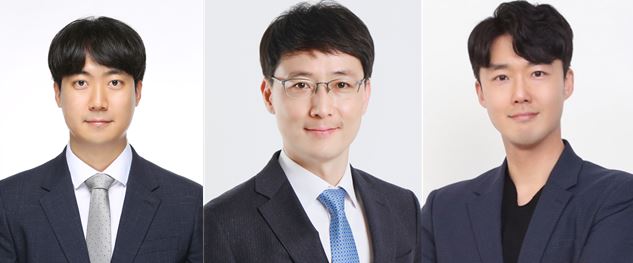




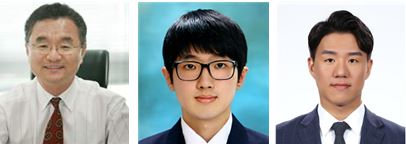

(Prof. Yong Man Ro, Sangmin Lee, Sungjune Park, from left)
Ph.D. Candidate Sangmin Lee and Sungjune Park (Prof. Yong Man Ro’s Lab) won the 1st place in the Ad-hoc Video Search (AVS) section of the 11th Video Browser Showdown (VBS 2022).
VBS is the international video retrieval competition held annually, and this year VBS 2022 is the 11th competition.
This year’s competition was held at Vietnam Phú Quốc for two days from June 6th to 7th, with 16 finalized video search teams from around the world.
The Ad-hoc Video Search section is to find as exact videos for given querys out of 2.5 million videos.
Sangmin Lee and Sungjune Park won the first place by constructing a multimodal search engine based on deep learning, which effectively searches target videos through the multi-modal correspondences of visual-audio-language latent representations.
The core algorithm adopted in the search engine, novel visual-audio representation learning method will be presented at CVPR 2022, the top tier conference in computer vision and AI field.
The title of the paper is “Weakly Paired Associative Learning for Sound and Image Representations via Bimodal Associative Memory”.
– Competition: 11th Video Browser Showdown 2022
– Award: Best AVS (1st place winner in Ad-hoc Video Search)
– Recipient: Sangmin Lee, Sungjune Park, Yong Man Ro (Advisory Professor)
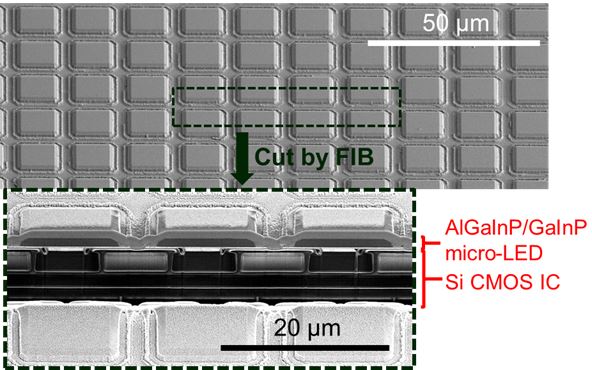
EE Prof. Kim, SangHyeon’s team, develops display using 3D integration techniques, promising applications on next generation high resolution displays

[ Prof. Kim, SangHyeon, Ju Hyeok Park (P.H.D candidate), Dr. Dae-myeong Geum, Woo Jin Baek (P.H.D candidate), From left]
KAIST EE Prof. Kim, SangHyeon’s research team has successfully developed a 1600-PPI MicroLED display by utilizing monolithic 3D integration techniques, as announced.
(*monolithic 3D integration: dubbed the ultimate 3D integration tech, wherein after the lower-layer devices, the upper layer’s thin film is created and stacking proceeds sequentially so as to maximize the upper-lower device alignment)
(* PPI: pixels per inch)
KAIST EE Prof. Kim, SangHyeon Kim’s research team members Ju Hyeok Park and Dr. Dae-myeong Geum led the work as co-first authors, collaborating with Woo Jin Baek from the same research lab and Dr. Johnson Shieh from Jasper Display in Taiwan. Their joint work has been presented at the “semiconductor Olympics”, the 2022 IEEE Symposium on VLSI Technology & Circuits. (Paper: Monolithic 3D sequential integration realizing 1600-PPI red micro-LED display on Si CMOS driver IC)
MicroLED devices using inorganic-based III-V compound semiconductors are gaining attention as core candidates for next-generation ultra-high resolution displays that are growing rapidly in demand. MicroLEDs offer advantages over current OLED and LCD displays widely used in modern TVs and mobile devices with features such as high luminance and contrast ratio, and a longer pixel life.
(*III-V compound semiconductors: Semiconductors comprising of compounds of Group III and Group V elements in the periodic table, offering excellent charge transport and light characteristics)
A monolithic 3D integration of red light-emitting LEDs on a Si CMOS circuit board was applied to solve the issues present in existing device technology. A demonstration of high-resolution display was made successful through continuous semiconductor processes on the wafer. Through this process, the LED semiconductor display layer was designed to reduce the thickness of the active layer for light emission to 1/3 and greatly reduce the challenges of the etching process required for pixel formation. In addition, to prevent performance degradation of the lower display driving circuit, the research team was able to maintain the performance of the lower Driver IC even after the integration of the upper layer by using ultra-low temperature processes such as wafer bonding that integrates the upper III-V layer below 350 C.
By successfully implementing state-of-the-art resolution of 1600-PPI MicroLED display using a monolithic 3D integration of red LEDs, this result is expected pave way for the next-generation ultra-high resolution displays.
Image 1.

Image 2.


Title: EE Professor Kim, SangHyeon’s Research Team Develops 3D Stackable Quantum Computing Readout Device
KAIST Builds 3D Stackable Quantum Computing Readout Device Low-power, low-noise, high-speed device integrated in 3D operates at super-low temperatures and promises large-scale applications to quantum computing devices.

<(From left) EE Prof. Kim, SangHyeon, PhD candidate Jeong, Jae Yong, NanoFab PhD candidate Kim, Jongmin, and KBSI Prof. Park, Seung-Young>
KAIST EE Prof. Kim, SangHyeon’s research team has developed a 3D-stacked semiconductor readout device integration technology, as made public on the 16th. The team made this possible by applying the strengths of monolithic 3D integration to overcome large-scale qubit implementation based on existing quantum computing systems. Their work is a first of its kind exhibiting the 3D stackability of quantum computing readout devices after an actively pursued line of research on monolithic 3D stacking of high-speed devices following a 2021 VLSI presentation, a 2021 IEDM presentation, and a 2022 ACS Nano publication.
(*monolithic 3D integration: dubbed the ultimate 3D integration tech, wherein after the lower-layer devices, the upper layer’s thin film is created and stacking proceeds sequentially so as to maximize the upper-lower device alignment)
KAIST EE Prof. Kim, SangHyeon Kim’s research team member Jeong, Jae Yong led the work as first author, collaborating with NanoFab PhD candidate Kim, Jongmin and KBSI Prof. Park, Seung-Young. Their joint work has been presented at the “semiconductor Olympics”, Symposium on VLSI Technology. (Paper: 3D stackable cryogenic InGaAs HEMTs for heterogeneous and monolithic 3D integrated highly scalable quantum computing system)
A qubit is capable of processing twice the amount computation compared with that of a bit. Number of qubits increasing linearly results in exponential speedup of their computation. Thus, developing large-scale quantum computing is of utmost importance. IBM, for instance, presented Eagle containing 127 qubits, and the IBM roadmap outlines development of a 4,000-qubit quantum computer by 2025 and one with 10,000-qubits or more in 10 years.
Designing such large-scale quantum computers with many qubits requires implementing devices for qubit control/readout. The research team has not only proposed and implemented 3D-stacked control/readout devices but also achieved world-best cutoff frequency characteristics at cryogenic settings despite the 3D stacking.
This work has been supported by the National Research Foundation of Korea, the System Semiconductor Development Program funded by Gyeonggi-do, and the Korea Basic Science Institute.
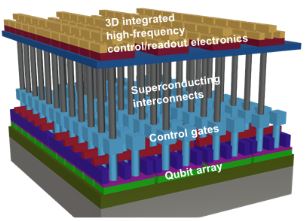

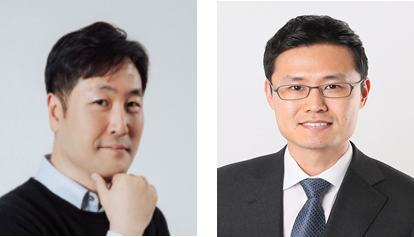
EE Professors Kim, Changick and Jeong, Jae-Woong Awarded on 2022 KAIST Research Day.

[From left, Prof. Kim, Changick, Prof. Jeong, Jae-Woong]
Professor Kim, Changick has been recognized with the Transdisciplinary Research Prize for his contributions to computer vision- and artificial intelligence-based monitoring technology of anthropocene effects on the planet. Anthropocene is a scientific concept referring to the recent geological epoch distinct from previous ones, marked by unprecedented transformations in the planet’s system from human activities since the Industrial Revolution. Prof. Kim has been conducting research with satellite images, computer modeling, and deep learning tools on monitoring the compromised states of planet Earth, such as climate change and sea level rises. In addition, as part of AI-based digital study of ecology, he has cooperated closely with anthropogeography and ecology experts to detect endangered species in the DMZ; he has developed a deep network capable of counting and classifying endangered species, such as the red-crowned cranes, the white-naped cranes, and the white-fronted geese. This study is meaningful in automating and maintaining the monitoring process of endangered species in the DMZ and Cheorwon.
Professor Jeong, Jae-Woong has been awarded the KAIST Scholastic Award for proposing a new direction in the automated treatment of brain diseases and cognitive research by developing for the first time an IoT (Internet of Things) based wireless remote control system for neural circuits in the brain. The proposed direction sets a vision for one of humanity’s most difficult challenges: overcoming brain diseases. Prof. Jeong has also led the field of research in wirelessly rechargeable soft subdermal implantable devices. These works have been published in 2021 in top journals of medical engineering: Nature Biomedical Engineering and Nature Communications. Said studies were led by Prof. Jeong’s team, with international collaborators in Washington University in School of Medicine, attracting over 60 press reports across the world.
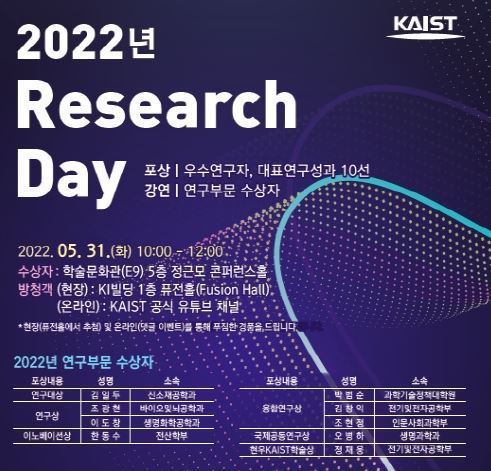




[Hyungtae Lim (PhD student), event officials, Prof. Hyun Myung, from the left)
l Name of Conference: 2022 IEEE International Conference on Robotics and Automation (ICRA)
l Name of Workshop and Date: Future of Construction: Build Faster, Better, Safer – Together with Robots Workshop, 23rd, May, 2022
l Prize: 2nd Prize among Academia (USD 3,000)
l Participants: Team QAIST (Quatro + KAIST). Hyungtae Lim, Daeboem Kim, Beomsoo Kim, Seungwon Song, Alex Junho Lee, Seungjae Lee, and Prof. Hyun Myung


[(from the left) Professor Kang Joonhyuk, Gong Jinu (Ph.D candidate)]
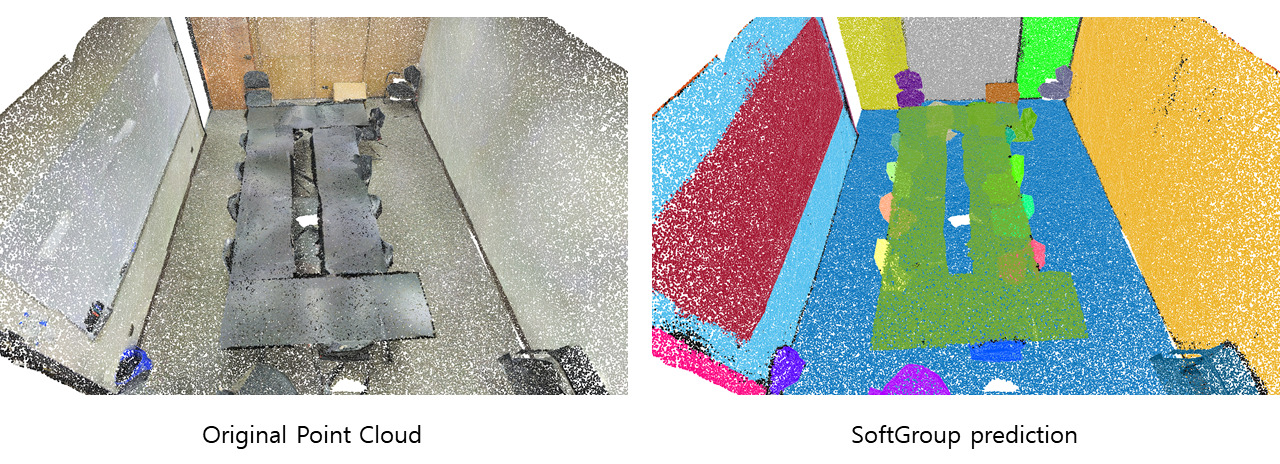
Title of the paper: SoftGroup for 3D Instance Segmentation on Point Clouds
Conference: The IEEE / CVF Computer Vision and Pattern Recognition Conference (CVPR) 2022
Date & Location: June 21, 2022 (Tue) / New Orleans, Louisiana, USA

[(from the left) Professor Chang D. Yoo, Vu Van Thang (Ph.D candidate), Kookhoi Kim (Master’s candidate)]
3D datasets are being utilized in various fields recently such as autonomous driving, robotics, and AR. 3D point clouds are data comprised of sets of 3D points and this study developed SoftGroup, a precision object segmentation technology based on 3D point cloud. SoftGroup allows each point to be associated with multiple classes to mitigate problems stemming from semantic prediction errors and surpasses prior state-of-the-art methods by more than 8% in terms of performance. Allowing for 3D instance segmentation of point clouds that contain more precise information of 3D space compared to traditional photographs, SoftGroup shows high potential for utilization in fields that leverage 3D point clouds.

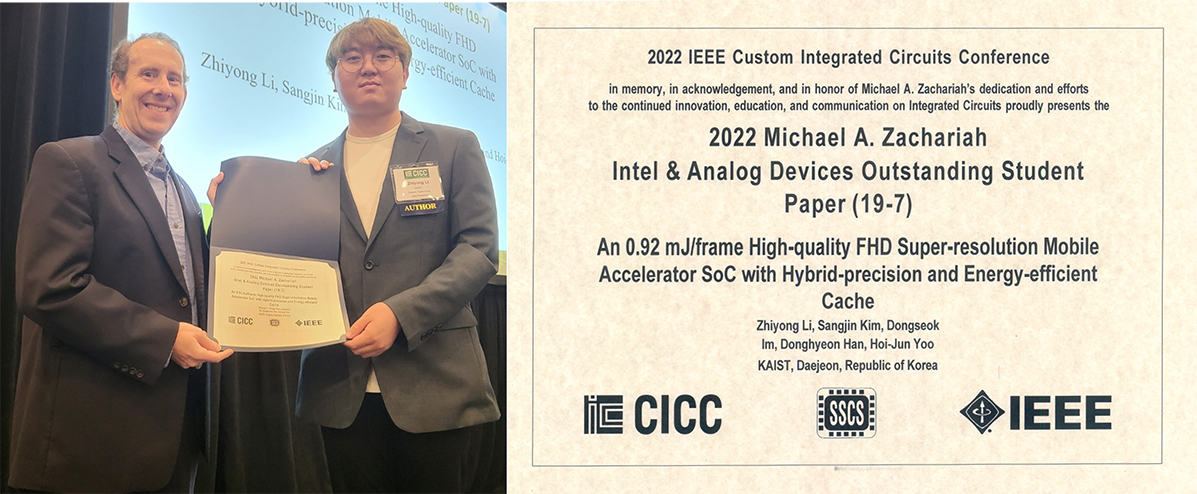

KAIST EE Ph.D. student Zhiyong Li (Advised by Prof. Hoi-Jun Yoo) won the Outstanding Student Design Award at the 2022 IEEE Custom Integrated Circuits Conference (CICC). The conference was held in California, U.S. from April 24th to 27th. CICC is an international conference held annually by IEEE. Ph.D. student Zhiyong Li has published a paper titled “An 0.92mJ/frame High-quality FHD Super-resolution Mobile Accelerator SoC with Hybrid-precision and Energy-efficient Cache”.
Details are as follows. Congratulations once again to Ph.D. student Zhiyong Li and Professor Hoi-Jun Yoo!
Conference: 2022 IEEE Custom Integrated Circuits Conference (CICC)
Date: April 24-27, 2022
Award: Intel & Analog Devices Outstanding Student Paper Award
Authors: Zhiyong Li, Sangjin Kim, Dongseok Im, Donghyeon Han, and Hoi-Jun Yoo (Advisory Professor)
Paper Title: An 0.92mJ/frame High-quality FHD Super-resolution Mobile Accelerator SoC with Hybrid-precision and Energy-efficient Cache